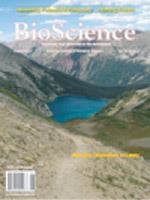A bold call for a new assessment system for professional productivity in biology appears on p. 619 of this issue. Lucinda A. McDade of Rancho Santa Ana Botanic Garden and Claremont Graduate University, together with colleagues at eight other institutions, describes a plan to create evaluation systems that are more easily applied to nontraditional forms of scholarly creation than the time-honored evaluation measure, citation in peer-reviewed journals with high impact factors. The nontraditional creations that the authors consider include collecting; curatorial work on specimens; and contributions to online resources, such as knowledge compendia, images, software, and data sets. Such works are becoming increasingly important to science, the authors plausibly maintain.
Because such works are not generally formally peer reviewed, the authors informally polled their own institutions, and their results seem to confirm the common impression that tenure committees and officials are often reluctant to take nontraditional publications into account when assigning credit and making hiring and tenure decisions. The authors, plus a number of endorsing organizations, commit themselves to revising what they see as an antiquated and harmful assessment system—one that seems to have had a more baleful effect on systematic biology than on some other areas.
Their efforts might also improve the assignment of credit for traditional publications in systematics. Current journal impact factors vary greatly between subfields and are a very crude indication of an article's value. Because the number of specialists studying some taxa is small, the impact factors of relevant journals are likewise small, if the journals are indexed at all. McDade and her coauthors propose, first, the systematic tracking of all forms of productivity, with automated systems employing unique identifiers to record intellectual creations and link them to individual researchers. They then favor, for some types of work, interactive assessment by the community of contributors, rather than traditional prepublication peer review. Interactive assessment should be superior to existing impact factors and measures such as the number of times a work is downloaded (which reflects in part how useful it is to practitioners, teachers, and students—a value distinct from scholarly originality).
The authors express the hope that biologists in other subdisciplines will make common cause and that tenure committees and administrators will start to use more comprehensive assessments of productivity once these are routinely generated. The proposal will likely find favor with BioScience readers, because many of them are systematic biologists who have paid a price for the broad reliance in academia on the traditional tools for assigning credit. Conventional peer review is unarguably showing signs of age with advances in technology. Its core principle is still important. In the future, however, it might more often be applied separately in interactive forums in efforts first to gauge the merit of and subsequently to improve scholarly works.
McDade and colleagues' proposal ought to stimulate a more systematic appraisal of the defects in current practice as well as efforts to expand assessment and develop novel ways for peers' evaluations to be used. The case for change is already strong.





